Archeology is a fascinating subject. It has helped us understand the history of many cultures around the globe. It’s the reason why we know our origins and have a good understanding of how our world has progressed.
On top of all that, it also helps us to connect to people from the past. When we look at the work they’ve done, the craftsmanship of the objects, the beauty of portraits and statues, we feel kinship and understanding. It allows us to relate to them on a new level. The pictures of artifacts and features in the list below do this perfectly. Scroll down to admire these wonderful findings.
- Read More: 50 Fascinating Archeological Finds We Are Lucky Enough To Witness, As Shared On This FB Group
#1 10,000 Year-Old Giraffe Engravings In The Sahara Desert
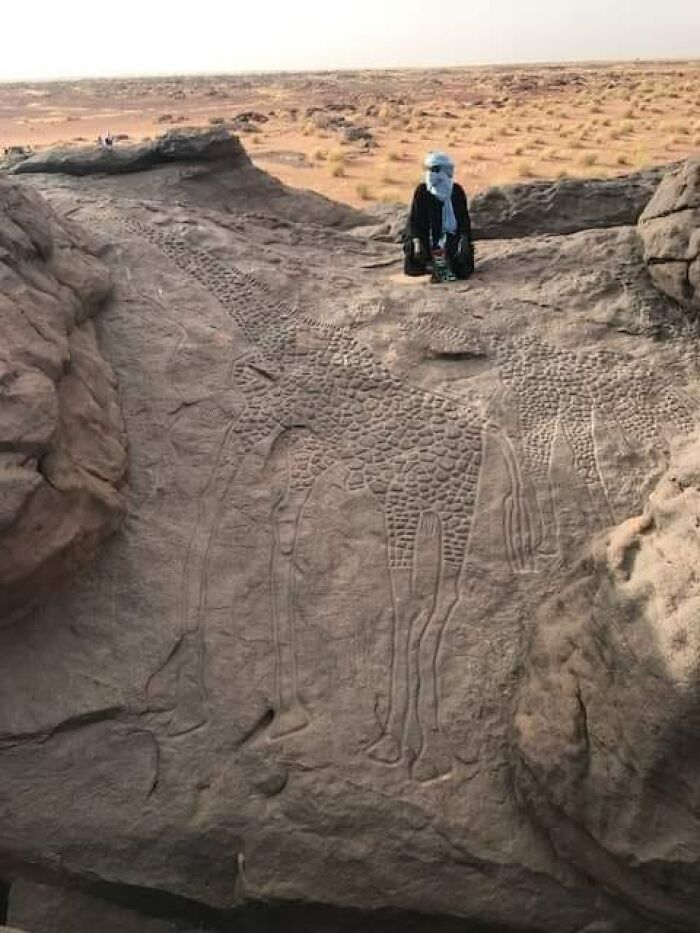
Image credits: Antique Archeology
#2 This 14th Century Door At Exeter Cathedral, UK, Is Thought To Be The Oldest Existing Cat Flap
A cat was paid a penny each week, to keep down the rats and mice in the north tower, and a cat flap was cut into the door below the astronomical clock to allow the cat to carry out its duties. Records of payments were entered in the Cathedral archives from 1305 to 1467, the penny a week being enough to buy food to supplement a heavy diet of rodents.
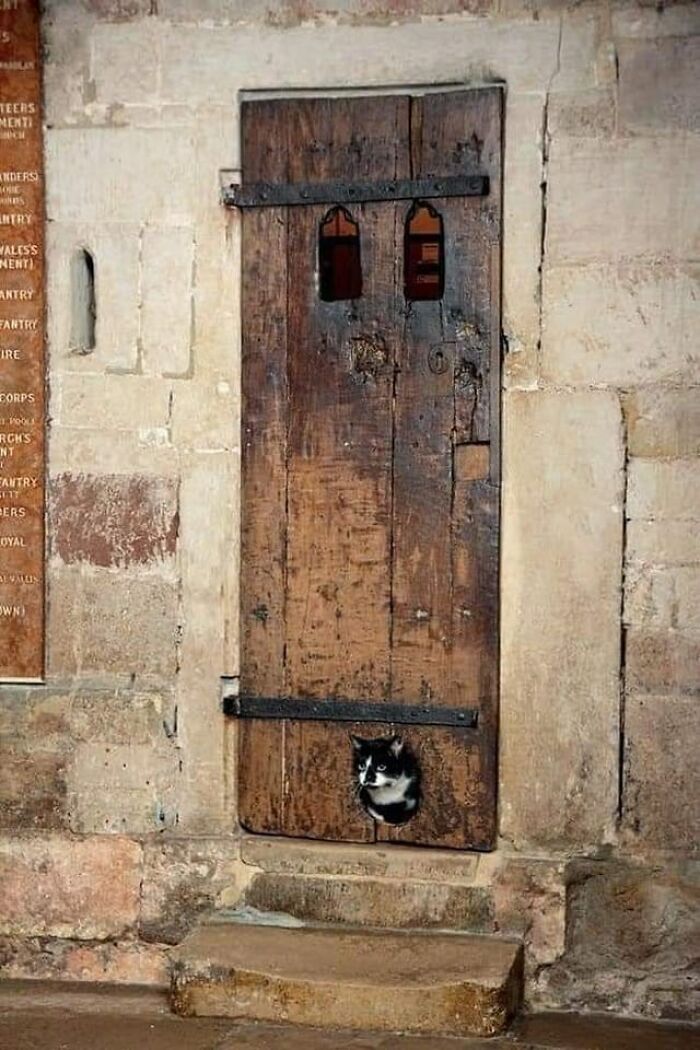
Image credits: Antique Archeology
#3 This 1500-Year-Old Cave In India Was Carved Out Of A Giant Rock
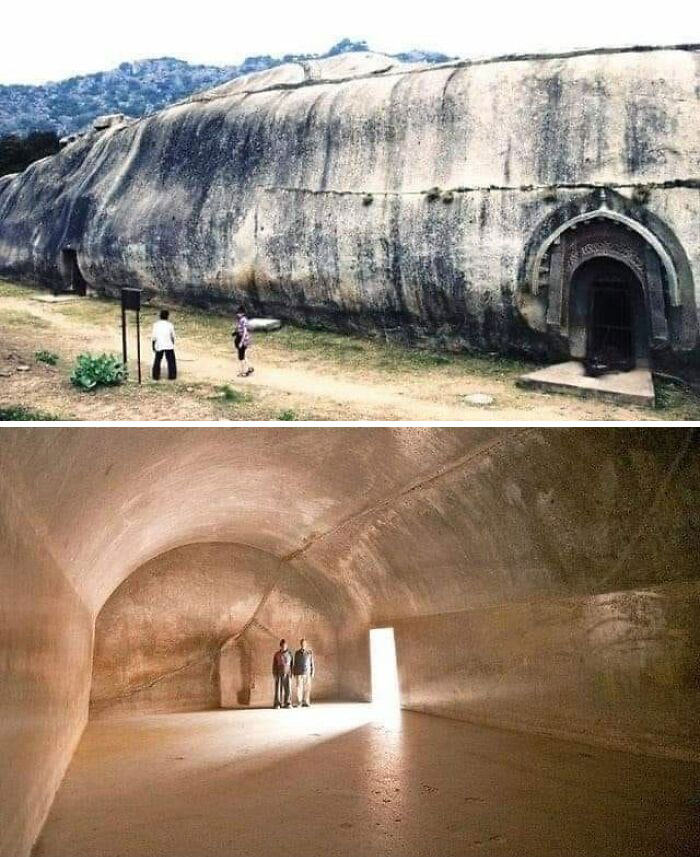
Image credits: Antique Archeology
#4 Mouse Eating A Nut. Roman Mosaic (200 Bc). Vatican Museums, Vatican City, Rome
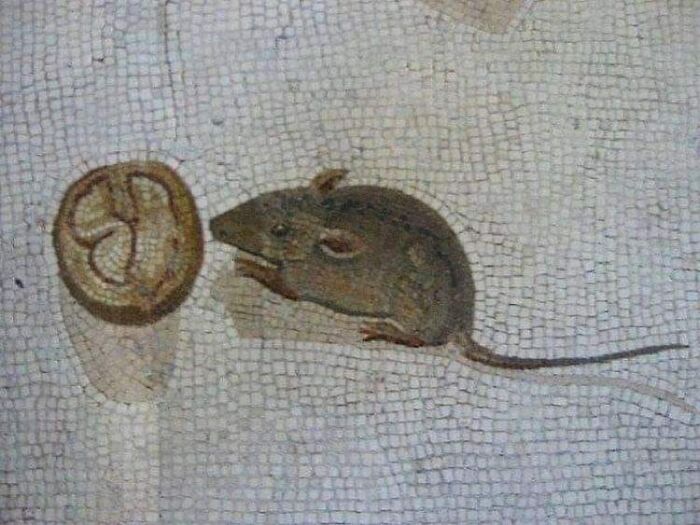
Image credits: Antique Archeology
#5 Ancient Bridge
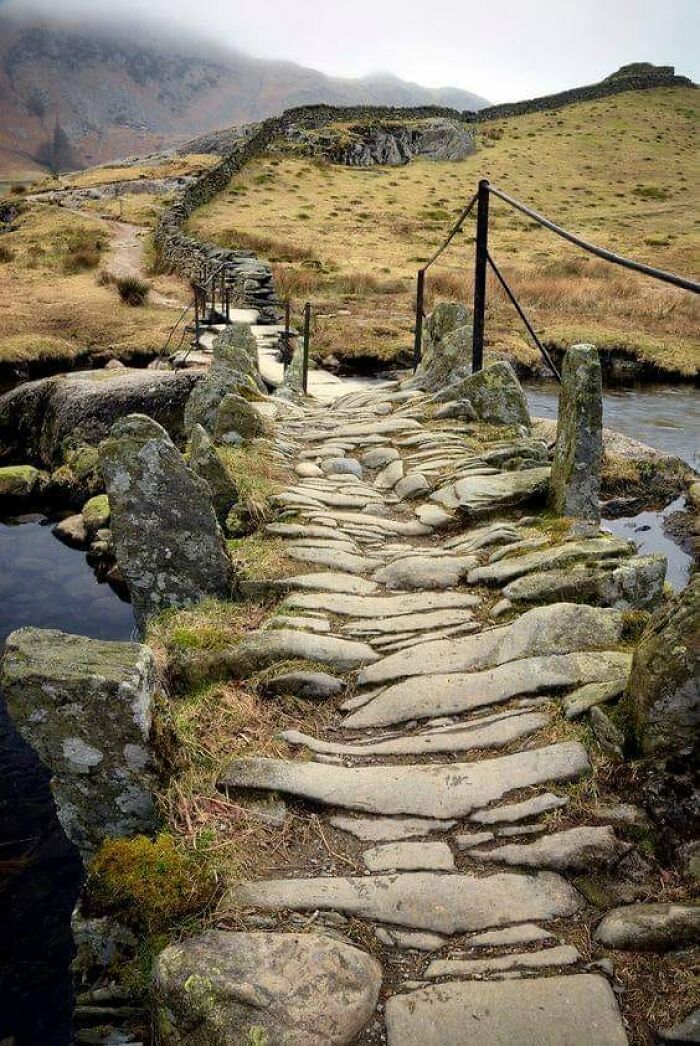
Image credits: Antique Archeology
#6 10th Century House In Iran
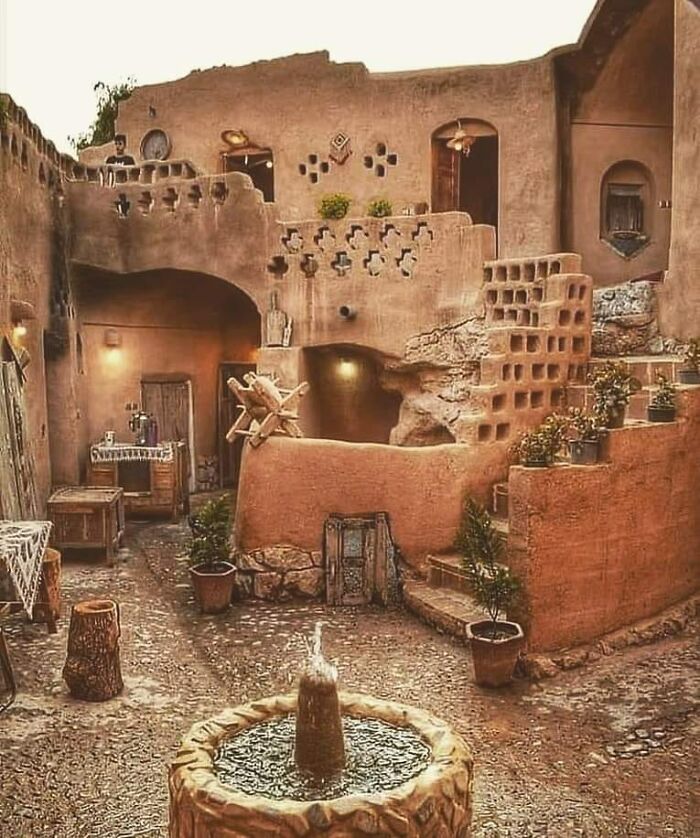
Image credits: Antique Archeology
#7 Roman Glass Jug With A Smaller Glass Jug Inside . A So Called Joke Jar That Shows The Skill Of The Glassmaker
Probably made in workshop in Cologne, found in burial in Stein am Rhein, #Switzerland, 4th c. AD.
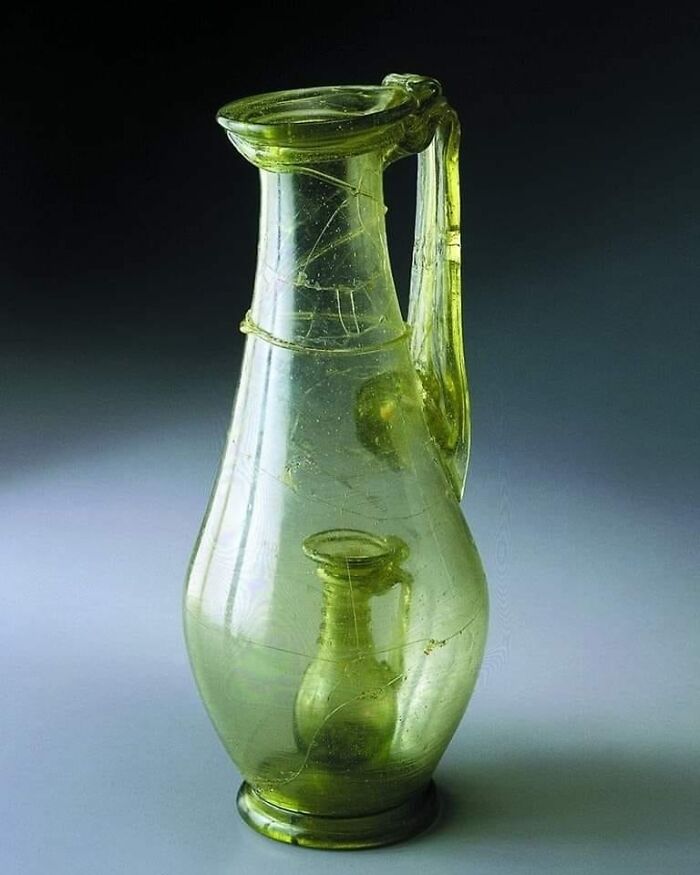
Image credits: Antique Archeology
#8 A Roman Toddler's Footprint In A Red Clay Tile, Imprinted As It Was Drying ~2000 Years Ago. Vaison-La-Romaine (Ancient Vasio Vocontiorum)
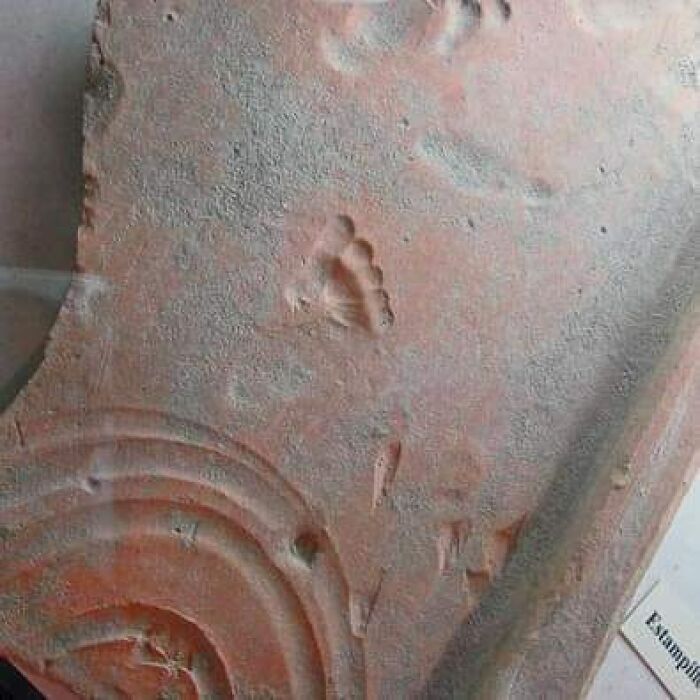
Image credits: Antique Archeology
#9 Mosaics Of A Roman Villa Found Under A Vineyard In Italy
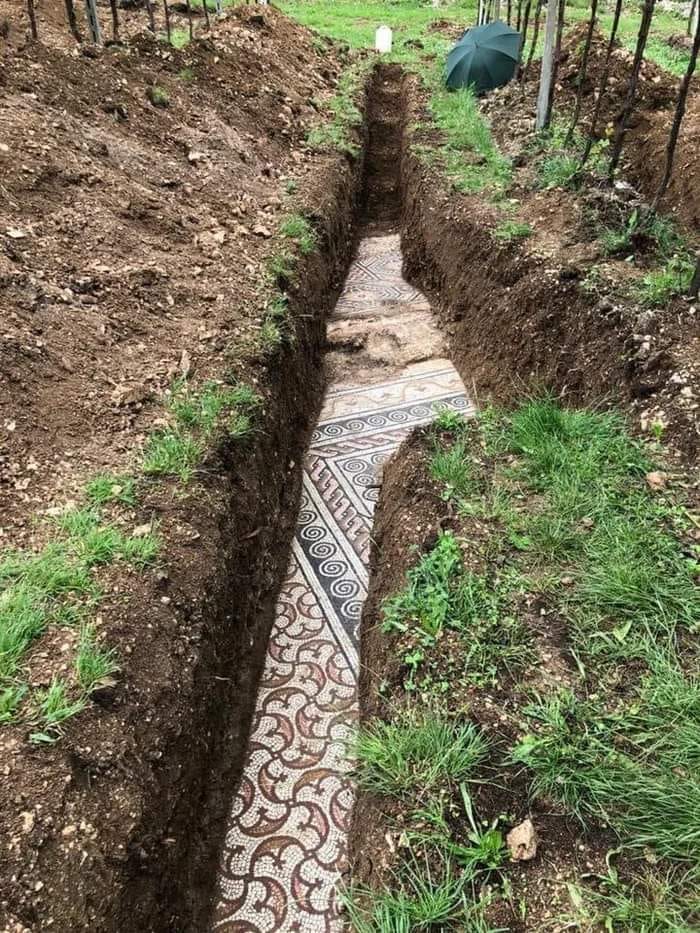
Image credits: Antique Archeology
#10 Mosaic Remains From Archaeological Site Of Volubilis, In Outskirts Of Meknes, Morocco
Archaeological site was founded in 3rd century BC, and was included in the UNESCO World Heritage List in 1997
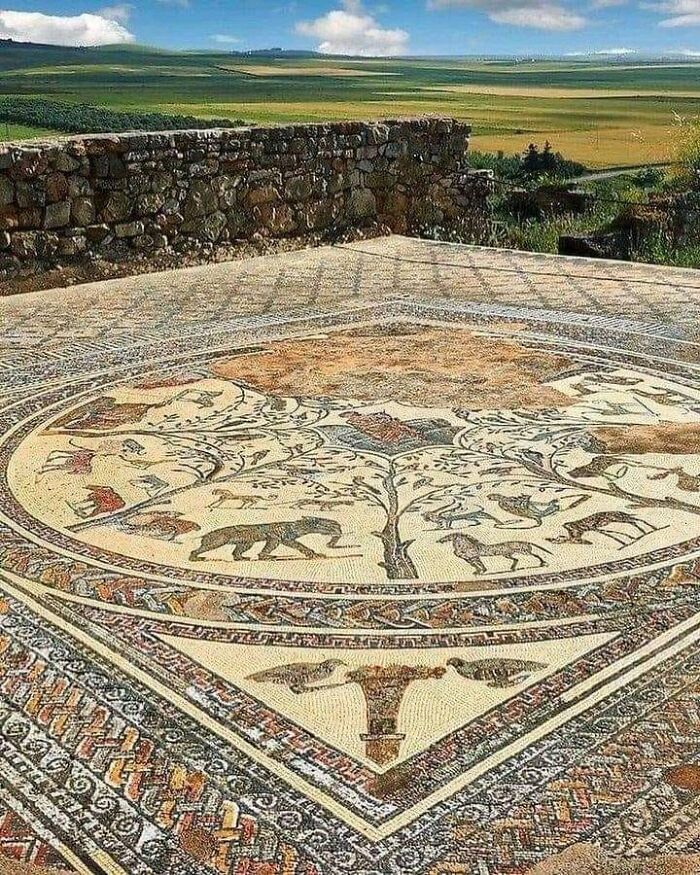
Image credits: Antique Archeology
#11 Beautiful Ancient Stone Masonry
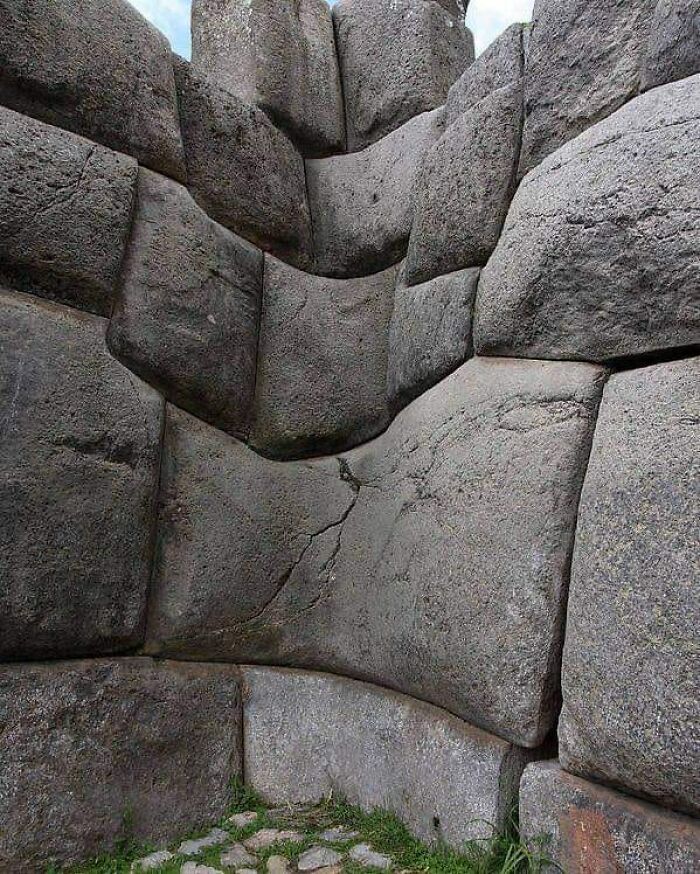
Image credits: Antique Archeology
#12 Over 100,000 Ceramic Wares From Two Chinese Shipwrecks, 1500 Meters Deep In The South China Sea. Discovered In May 2023. Ships Dated To The Ming Dynasty, 1506-1522 Ad
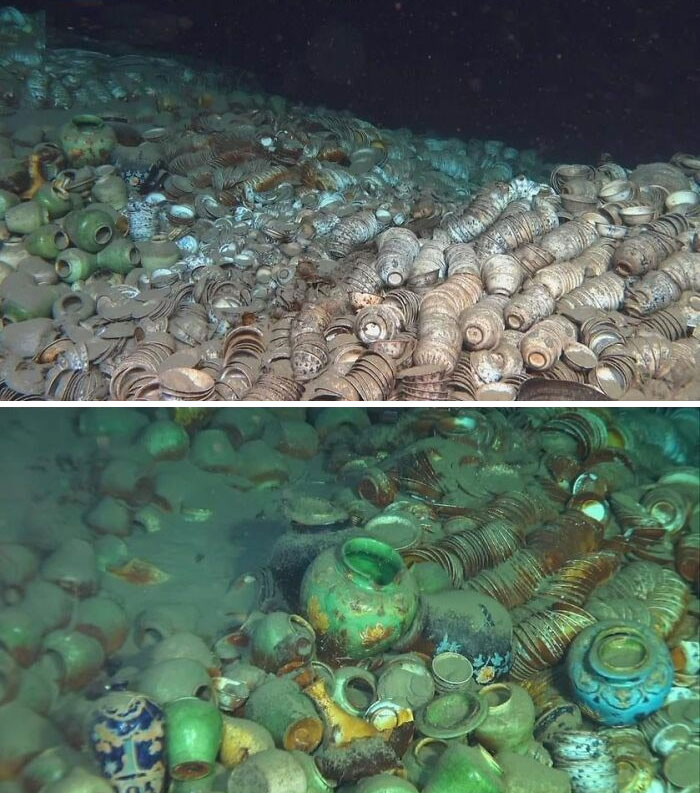
Image credits: Antique Archeology
#13 This Small Bronze Purse (4.3x3.3 Cm) Was Found With Six Gold Coins Still Inside In The Celtic Oppidum (Settlement) At Manching, Germany
It was originally sealed with an organic material, presumably a leather strap. Ca. 200 BCE
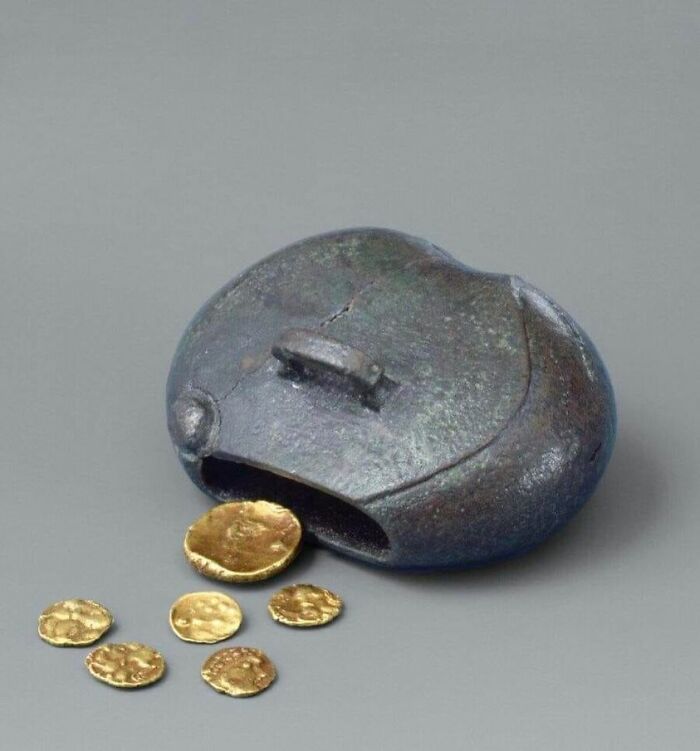
Image credits: Antique Archeology
#14 Directly From Ancient Rome, Carvilio's Ring: The Excruciating Pain Of A Roman Mother For The Death Of Her Son
In 2000, during the removal of a high voltage pylon in a private property near Grottaferrata (a suburb of Rome) archaeologists found two sarcophagi, which contained the remains of the noble Aebutia Quarta and her son Carvilio Gemello, who lived in the first century after Christ. Carvilio died prematurely at the age of about eighteen, in mysterious circumstances (perhaps from poisoning). After losing the only male child, the roman noblewoman built a wonderful sarcophagus, with accurate finishing and refined inscriptions for his son. Due to the floral ornaments placed at the entrance and inside, the archeological site today is known as the "Hypogeum of the garlands". When Ebuzia died (probably at the age of 40 or 50), she was buried in the same place of her son Carvilio. The two nobles were embalmed (probably because they were followers of the cult of Isis, which was very fashionable at the time). Thanks to this procedure it was possible to find one of the most important and amazing jewels of ancient Rome that has come down to us: Aebutia wears a magnificent band ring. The gold frame has a cavity where a chiseled miniature portrait has been placed, perfect in its details. It probably represents the young Carvilio Gemello, with wavy hair, intense gaze, fine lips, pronounced nose and bare bust. The amazing miniature is wrapped in rock crystal (hyaline quartz, defined by the ancient Romans as "acentetus, the color of clear water"), which has given a timeless depth to the boy's expression. It was certainly the pain and love for Carvilius that prompted her to commission the precious jewel from an imperial master of goldsmithing (who almost certainly lent his services to the emperor himself, given the magnificence of the find). The ring of Carvilio, separated from its owner after millennia, is now on display at the Archaeological Museum of Palestrina, Italy.
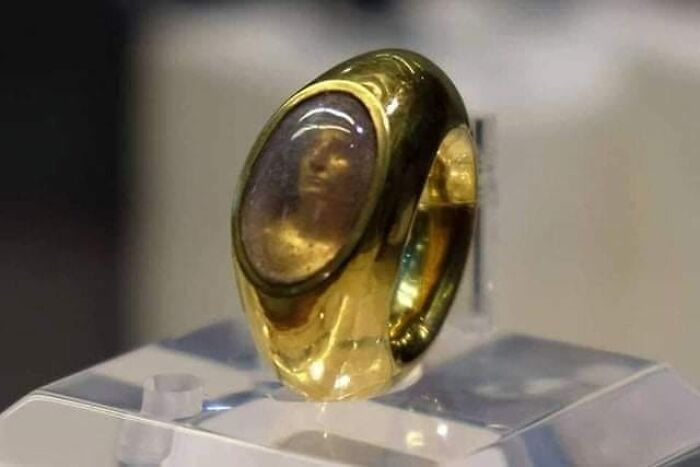
Image credits: Antique Archeology
#15 Details Of One Of The T Columns In Göbekli Tepe. It Is Approximately 12,000 Years Old, Making It Remarkably Older Than Egyptian Pyramids And Stonehenge
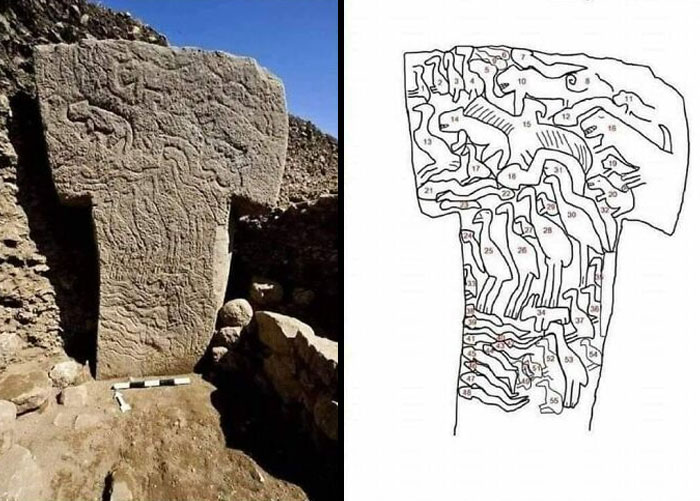
Image credits: Antique Archeology
#16 Tiled Stairs In Ali-Qapu Palace In Isfahan - Iran Built By The Safvaid King Shah Abbas I At The End Of The 16th Century (1597)
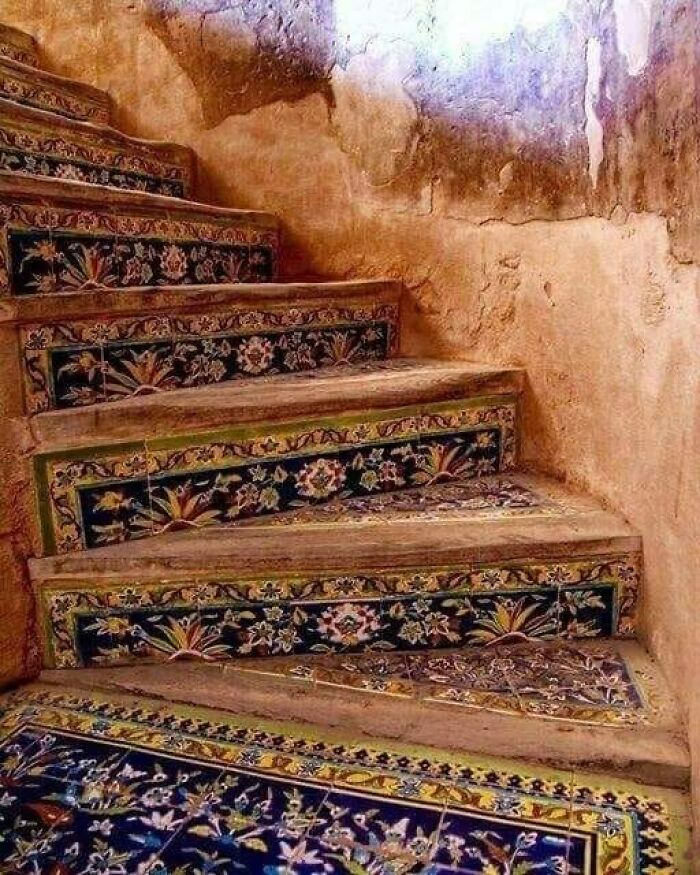
Image credits: Antique Archeology
#17 The ‘Melted’ Stairs And Fascinating Reliefs In Temple Of Hathor In Dendera, Egypt
Temple has been modified on same site starting as far back as Middle Kingdom (2030-1650 BC). Existing structure began construction in late Ptolemaic period at time of Ptolemy Auletes, 54 BC.
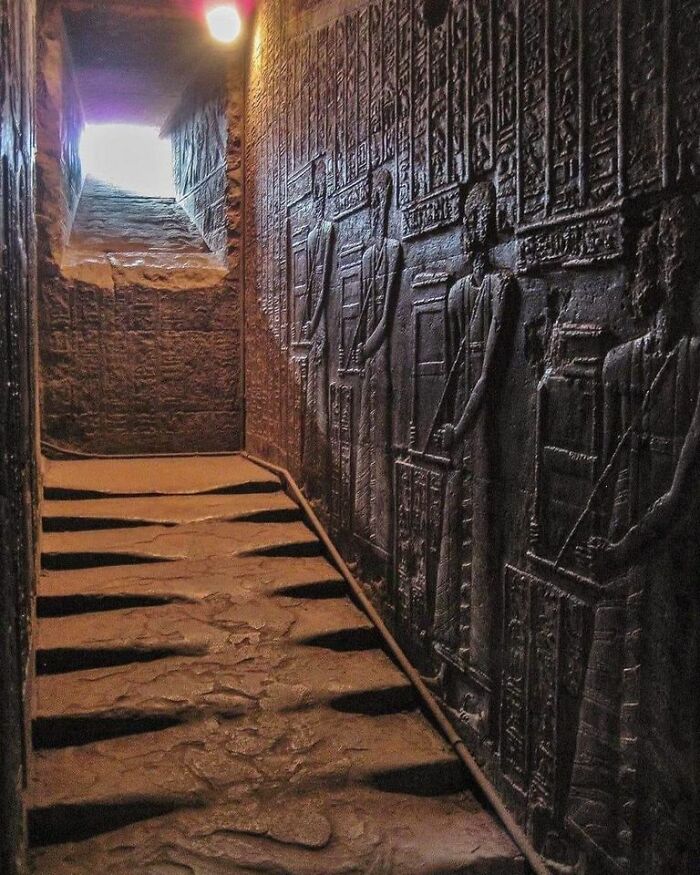
Image credits: Antique Archeology
#18 Armor Of An Officer Of The Imperial Palace Guard, China 18th Century
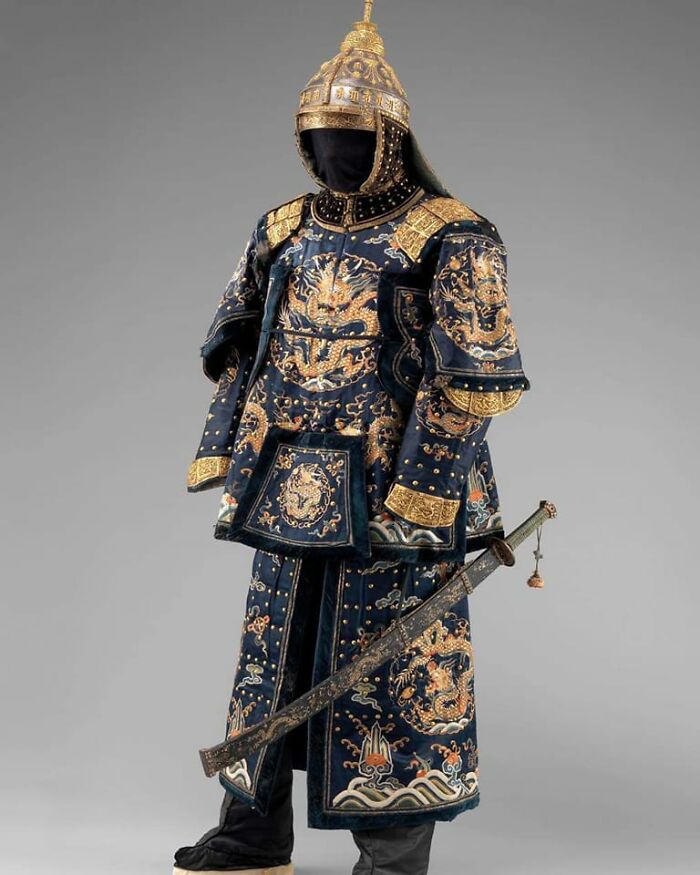
Image credits: Antique Archeology
#19 A 2,300-Year-Old Ancient Greek Gold Wreath Worth £100,000, Kept For Decades In A Tatty Box Of Old Newspapers Under Bed By Owner Who Had No Idea What It Was.
The wreath was put on sale at Duke’s of Dorchester auction house in 2016
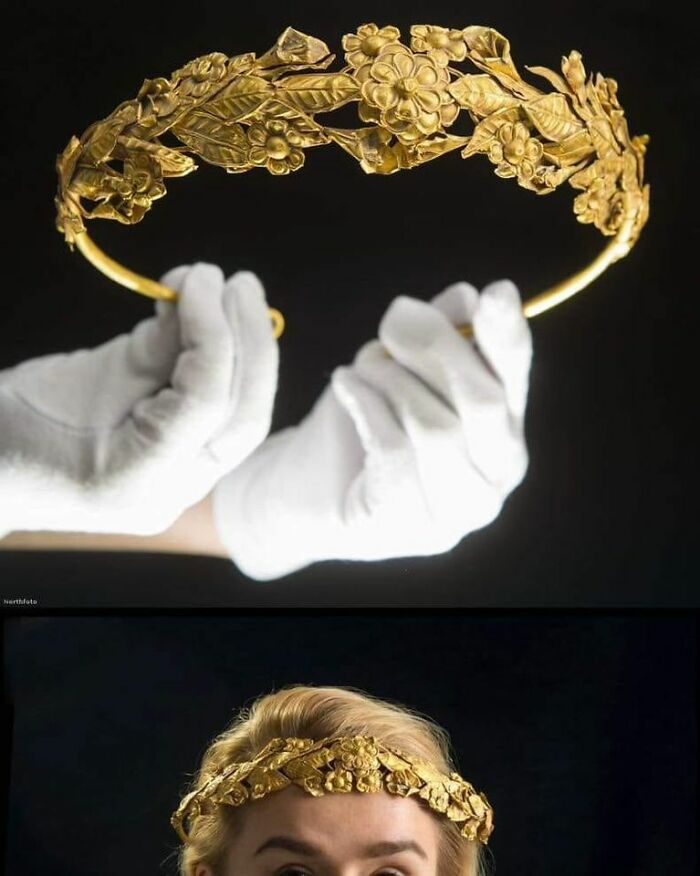
Image credits: Antique Archeology
#20 Intricately Carved Violin Of Domenico Galli, 1687
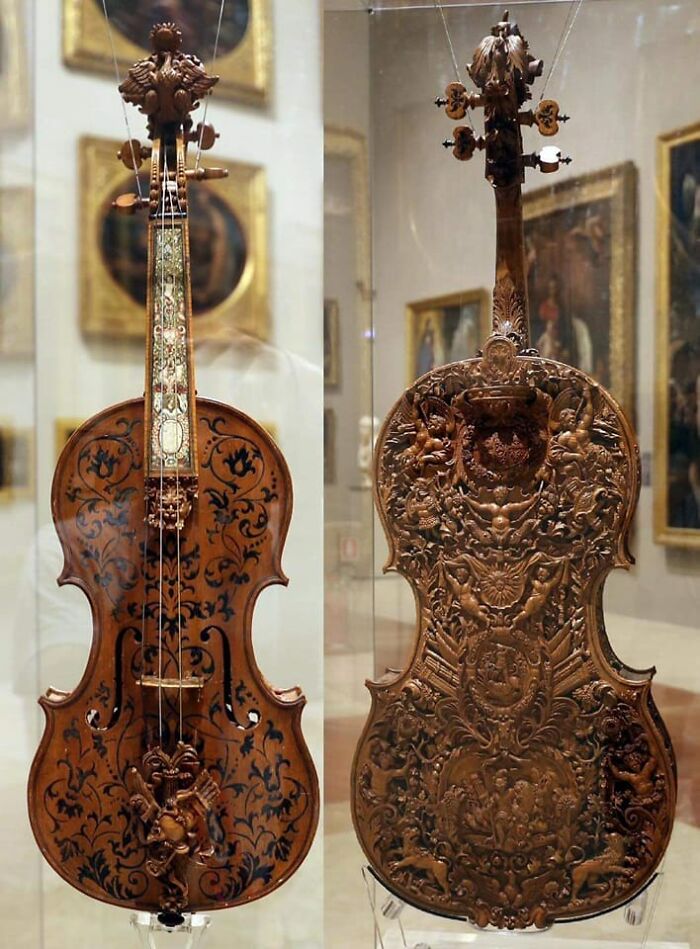
Image credits: Antique Archeology
#21 Treasure Of 51 Macedonian Gold Coins. Was Hidden Sometime After 330 Bce In A Cavity In A Rock In Ancient Corinth
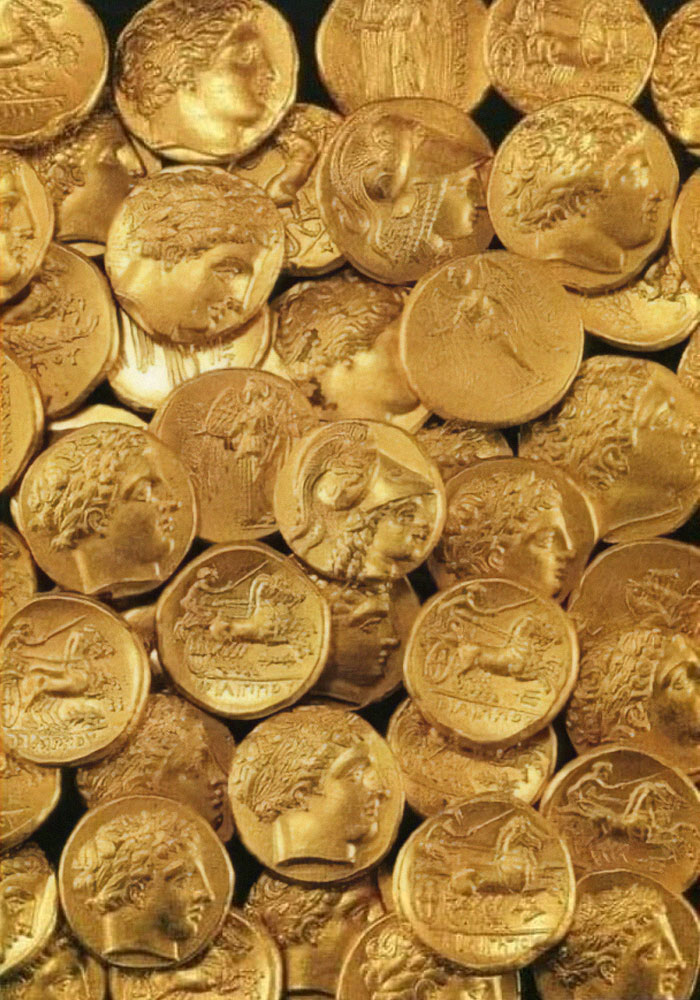
Image credits: Antique Archeology
#22 Pompeii - “The Mosaic Of The Great Hunt Of The Roman Villa Of Casale Di Piazza Armerina, Sicily.”
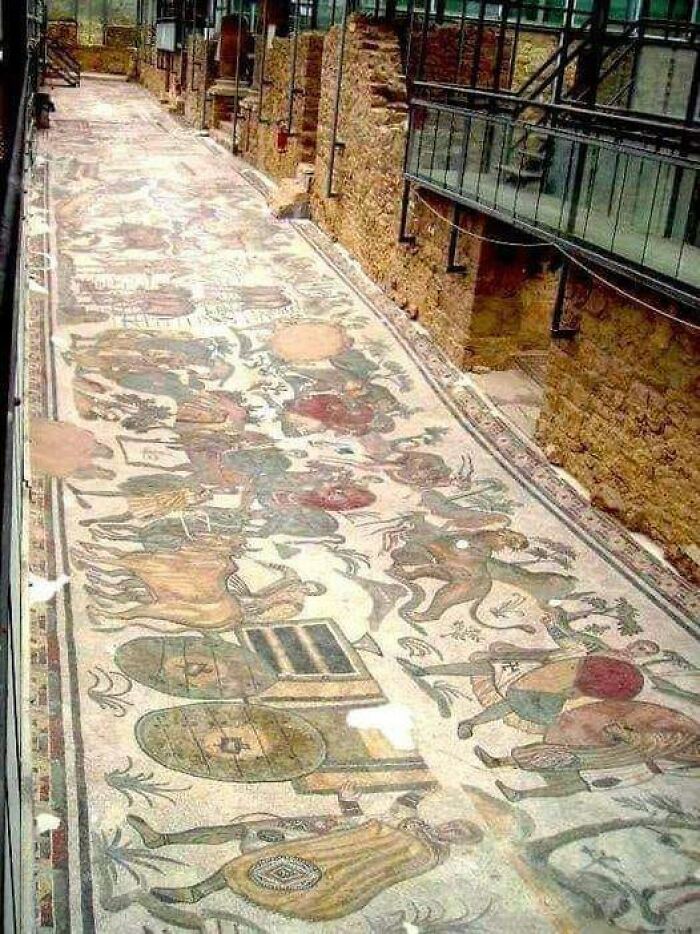
Image credits: Antique Archeology
#23 The Guinigi Tower - A 45-Metre-Tall Fortified Tower-House Built In The 1300s, With Holm Oak Trees Growing In Hanging Gardens At Its Top. Lucca, Italy
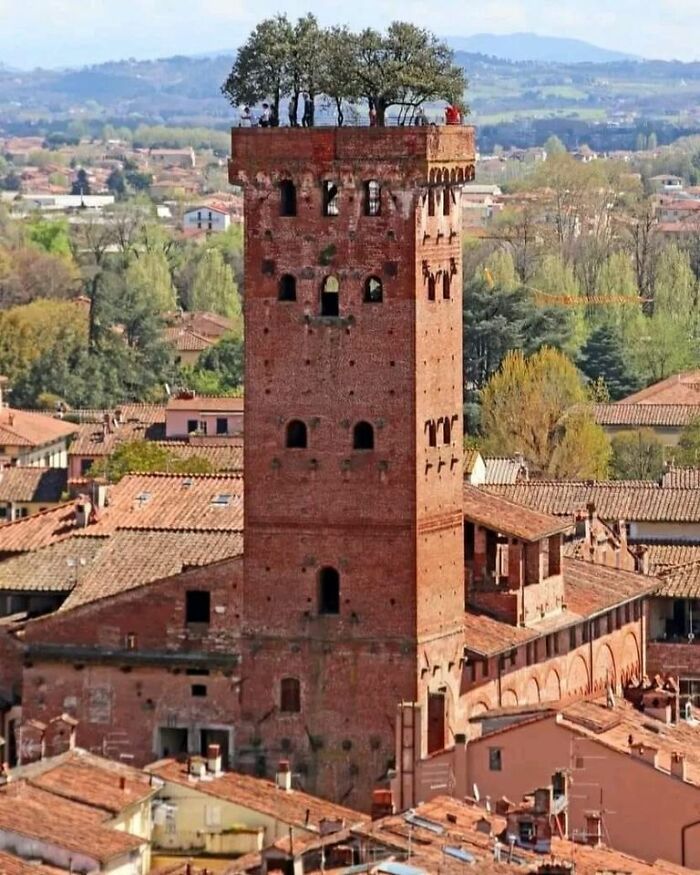
Image credits: Antique Archeology
#24
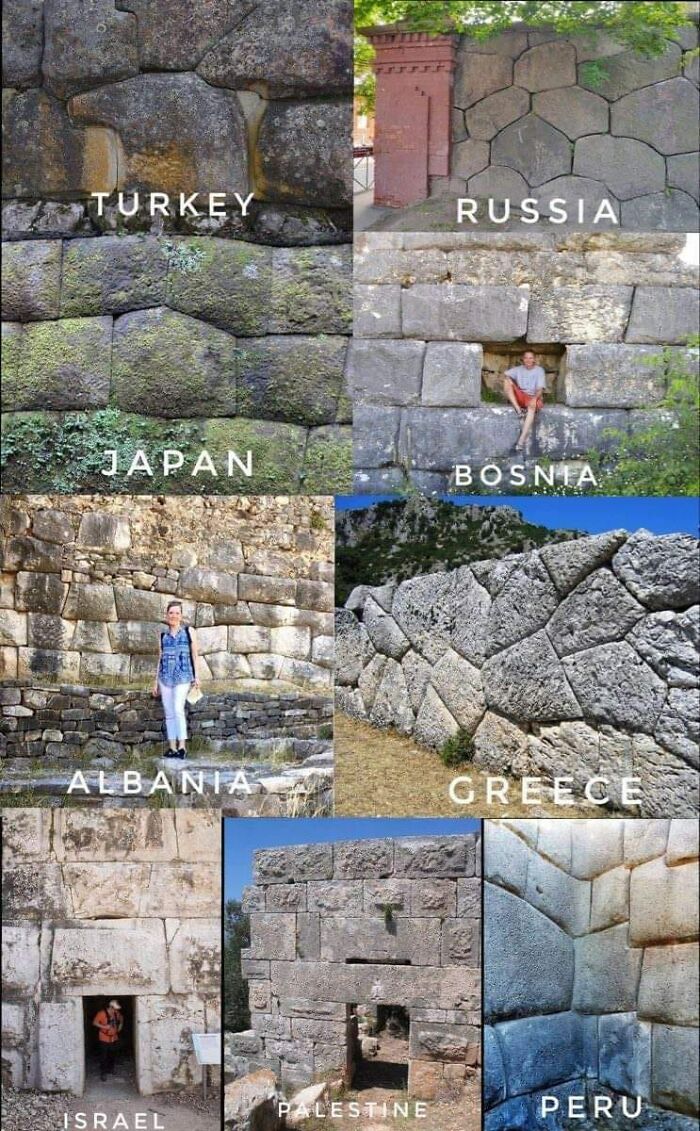
Image credits: Antique Archeology
#25 A Massive Floor Mosaic From The Bath Of The Seven Wise Men At Ostia Antica. Made Around 1,800 Years Ago, It Depicts An Elaborate Black And White Hunting Scene
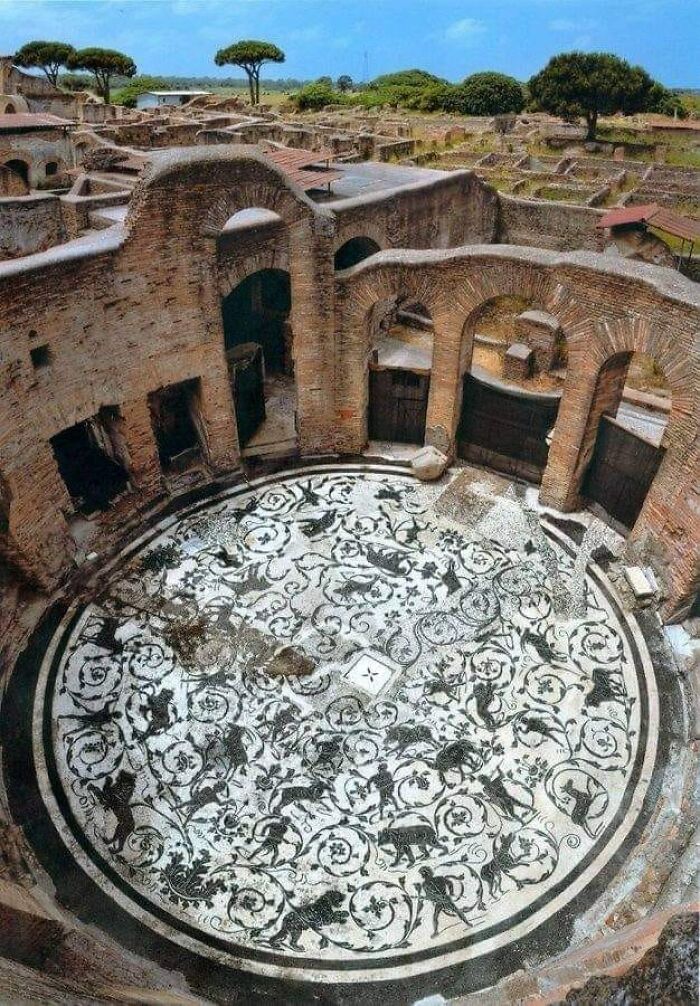
Image credits: Antique Archeology
#26 Persian Achaemenid Rhyton (Drinking Vessel Or Vessel For Pouring Libations) Made Of Lapis Lazuli And Gold. 6th-5th Century Bce. Abegg Foundation, Riggisberg, Switzerland (6.7.63)
Persian Achaemenid rhyton (drinking vessel or vessel for pouring libations) made of lapis lazuli and gold. 6th-5th century BCE. Abegg Foundation, Riggisberg, Switzerland (6.7.63)
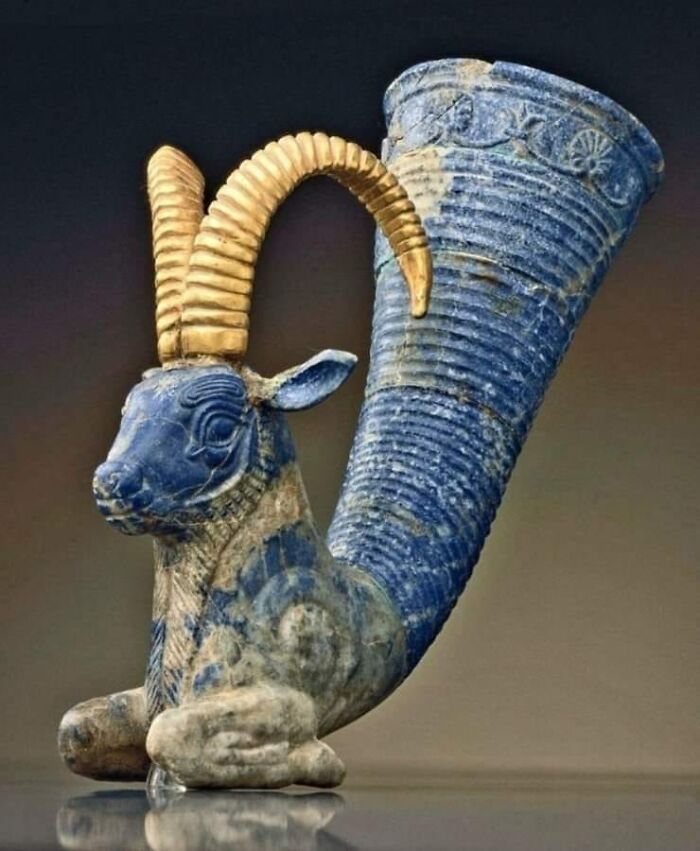
Image credits: Antique Archeology
#27 Mycenaean Daggers, Made Of Silver And Gold. Found In Shaft Graves 4-7 In Grave Circle A, 1550-1500 B.c
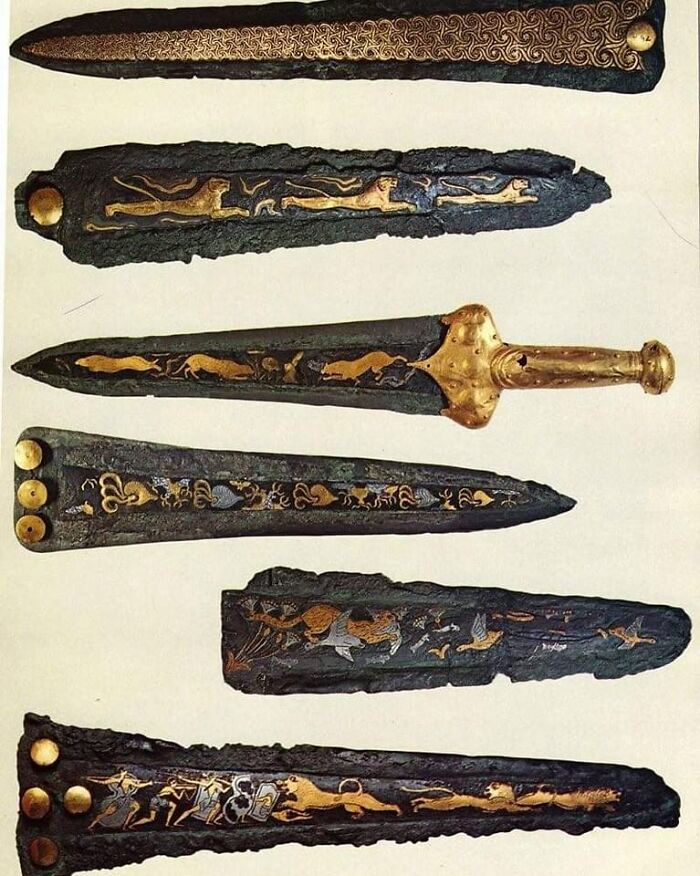
Image credits: Antique Archeology
#28 A 3rd Century Ce Roman Horse Armour, Made Up Of About 2000 Bronze Scales
Found in Dura-Europos, Syria, and is now housed at the National Museum of Damascus. The bottom picture shows the armour shortly after it was discovered in 1932
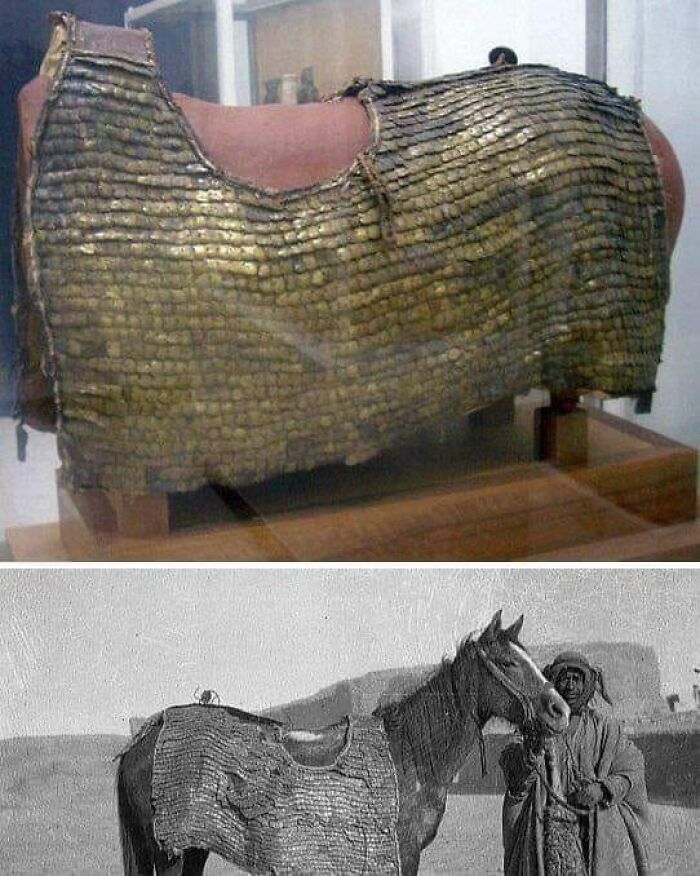
Image credits: Antique Archeology
#29 A Fortuitously Placed Fossil. A 320 Million Year Old Goniatite Fossil, County Clare, Ireland
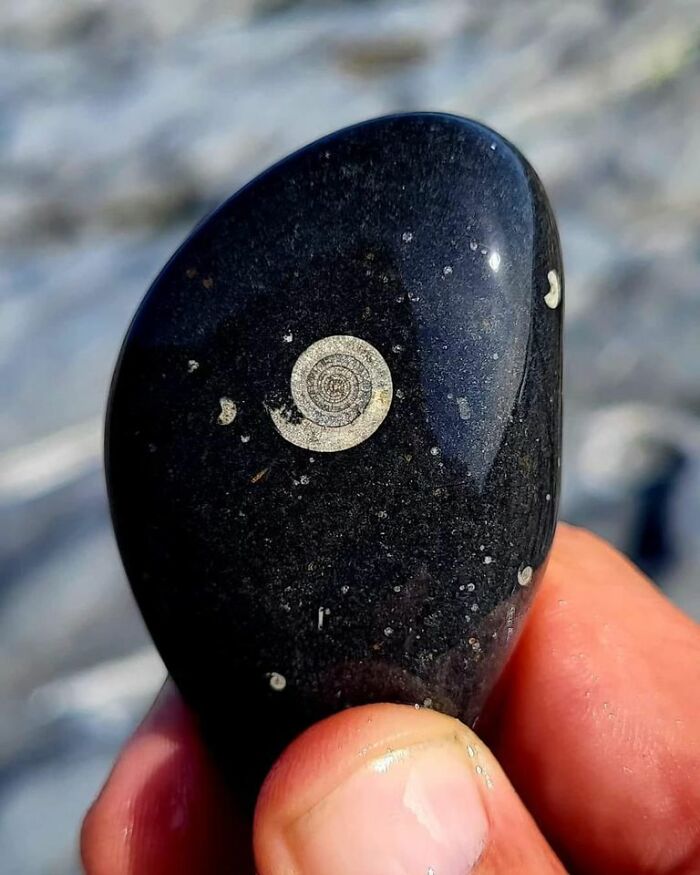
Image credits: Antique Archeology
#30 Roman Mosaic At Entrance To House Of Tragic Poet In Ruins Of Pompeii, Which Was Destroyed In 79 Ad.
Mosaic is approximately 2000 years old and depicts a chained dog with caption "cave canem," which means "beware of the dog."
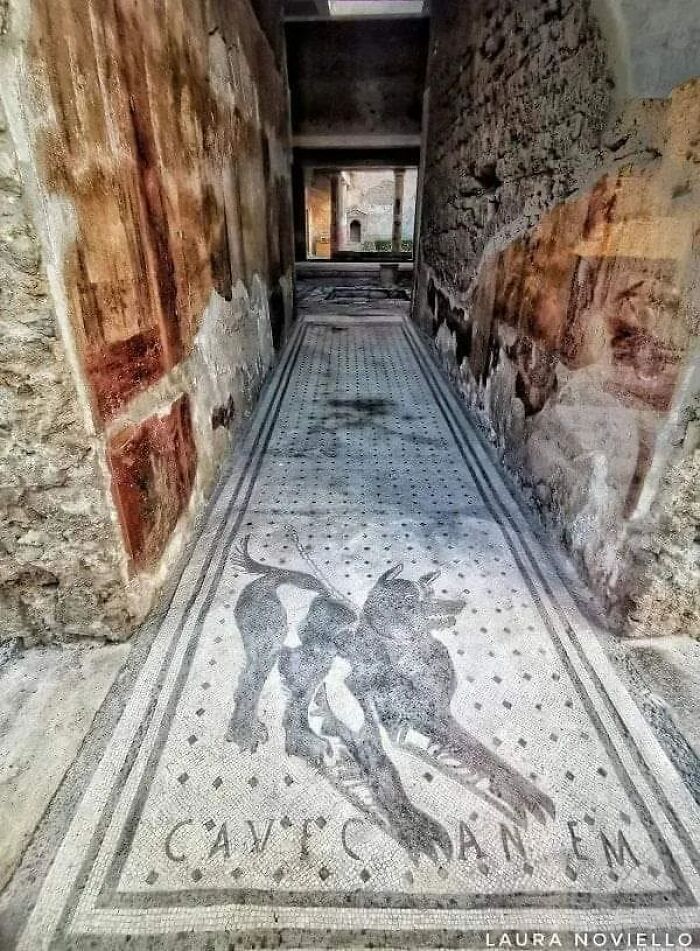
Image credits: Antique Archeology
#31 The 'Trier Gold Hoard' Was The Largest Roman Gold Hoard Ever Discovered
Comprising of 2,500 gold coins weighing 18.5 kg , the discovery was made during excavation works in 1993, nearly 1,800 years after it was hidden. The discovery of the Gold Hoard in Trier in 1993 caused quite a sensation. Greater inspection revealed that it was not simply someone's personal fortune but most likely an official treasury. The treasury had been carefully administered and had grown over time. The Hoard equated to the annual salary of around 130 Roman soldiers. The aurei (gold coins) feature a total of 27 emperors, empresses and members of the imperial family, and some are still considered unique to this day.
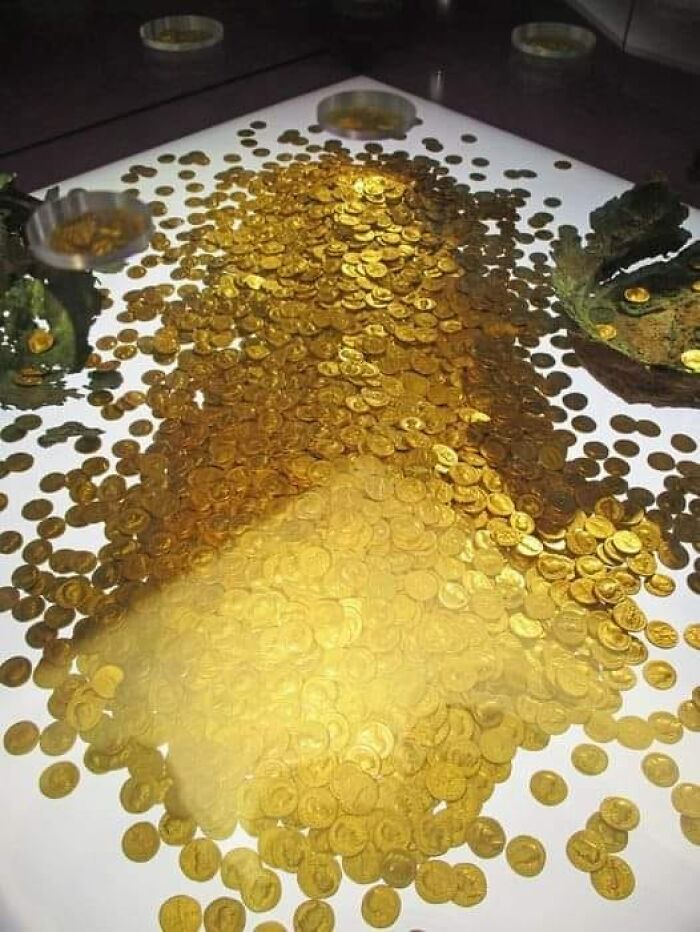
Image credits: Antique Archeology
#32 Ancient Tunnel Under The Great Pyramid Of Cholula
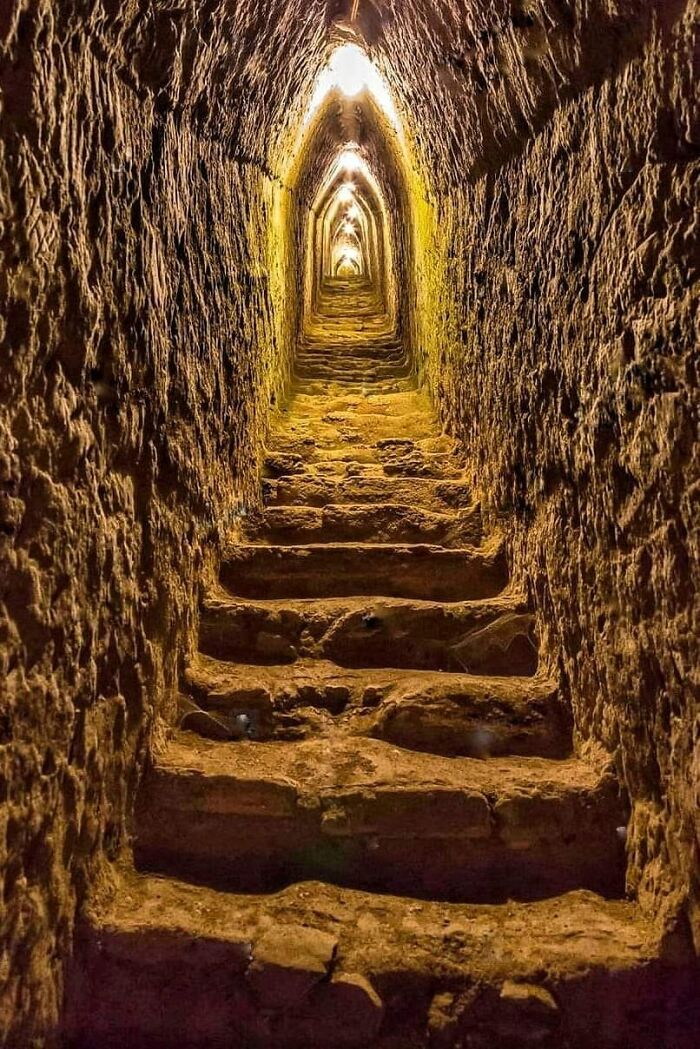
Image credits: Antique Archeology
#33 A 1st Century Ad Head Of A Cyclops From The Roman Colosseum
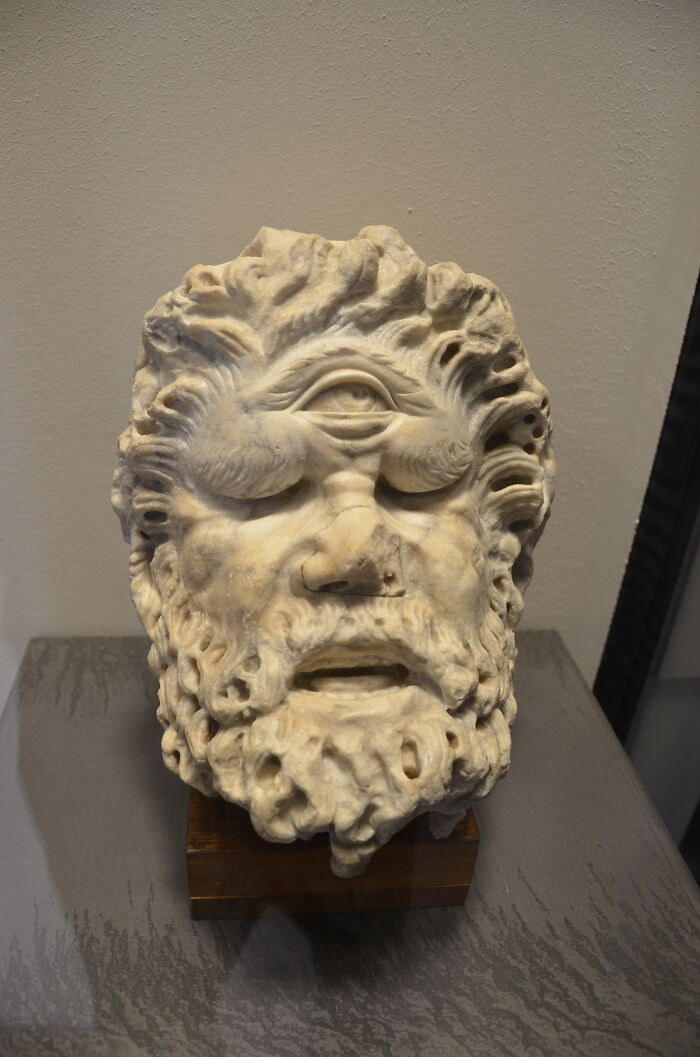
Image credits: Antique Archeology
#34 Finding The Foot Of The Roman Emperor Marcus Aurelius Statue In Sagalassos Ancient City In Ağlasun, Burdur
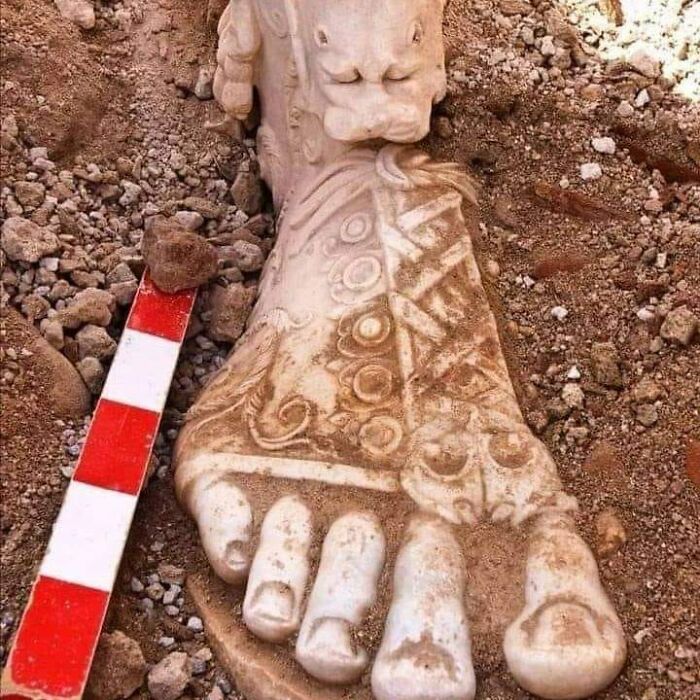
Image credits: Antique Archeology
#35 Sea Shell With Carved Head At The Apex (Probably Phoenician, 600 Bc)
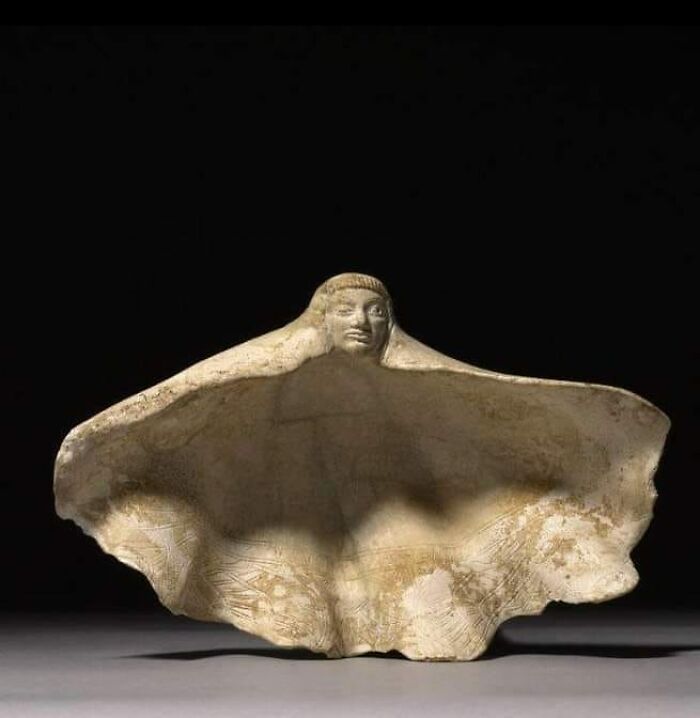
Image credits: Antique Archeology
#36 A Series Of 11th-Century Crystal Chess Pieces From The Museo Da Catedral In Ourense, Spain
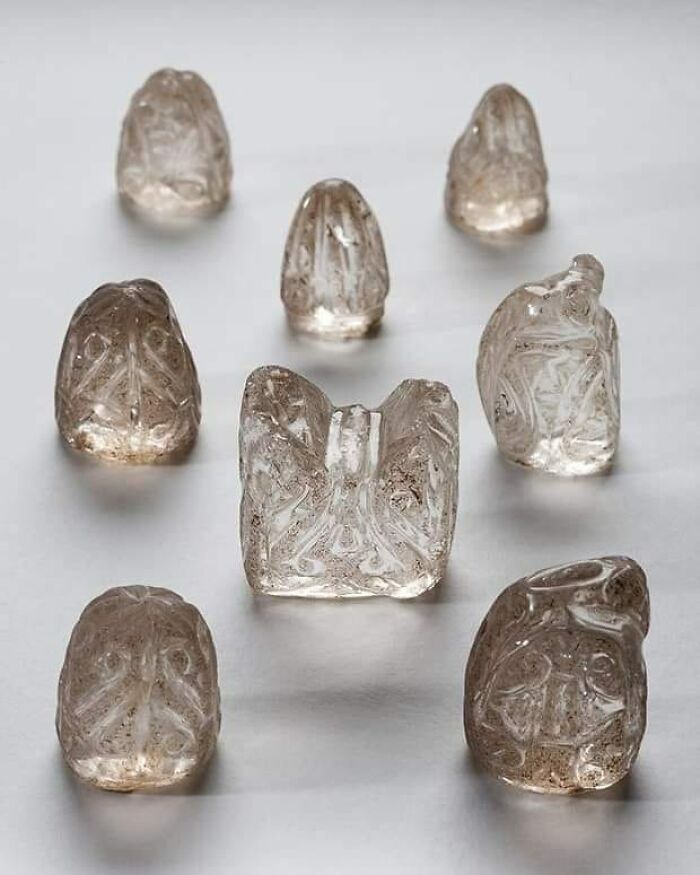
Image credits: Antique Archeology
#37 Ancient Roman Glass Bottles
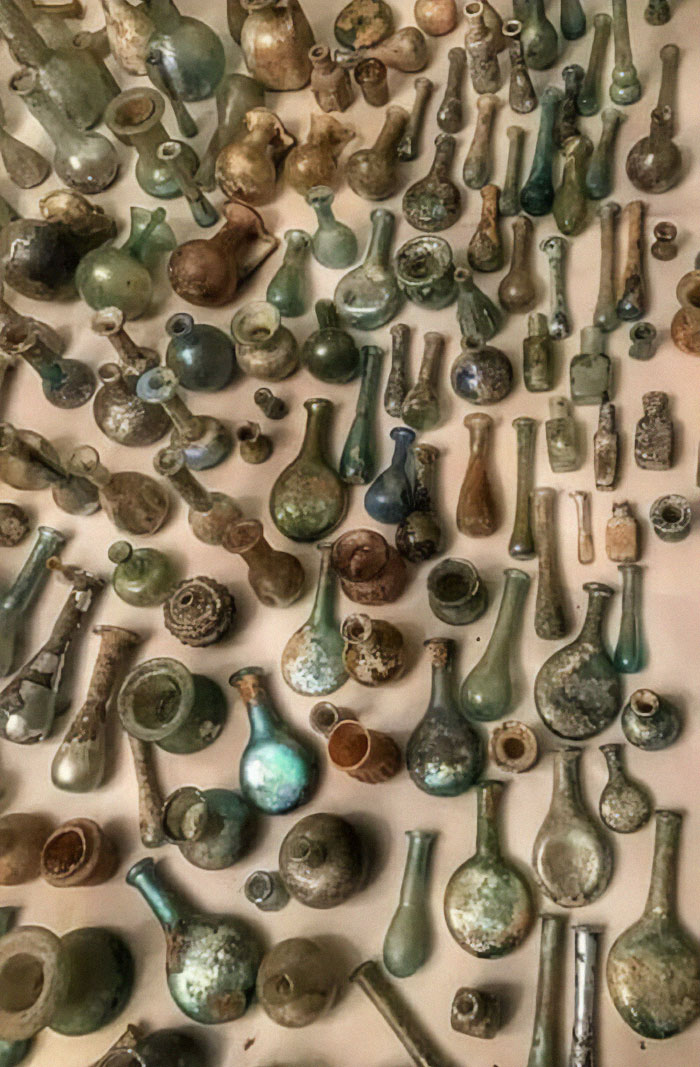
Image credits: Antique Archeology
#38 Treasure Recovered From The Wreck Of Theydah Gally
The only fully authenticated Golden Age pirate shipwreck ever discovered. The ship sank in 1717 killing nearly all of its 150-person crew, including its captain Bellamy.
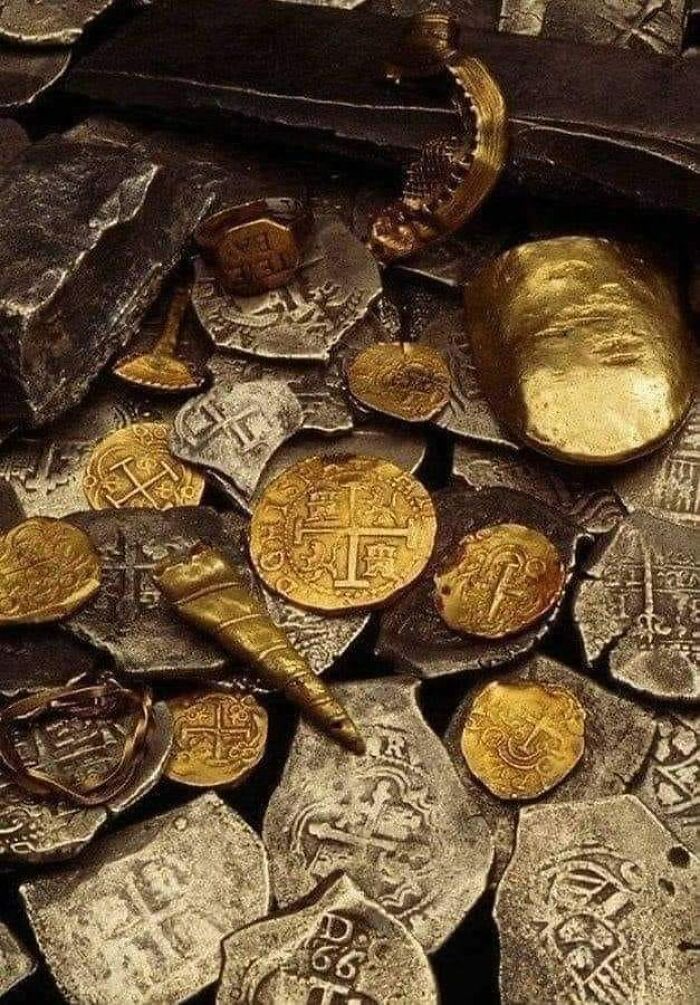
Image credits: Antique Archeology
#39 Gold Bull’s Head Bowl Known As “Attila’s Cup”, Part Of The Nagyszentmiklós Treasure Uncovered In Hungary, Dates To The 6th Century Ad
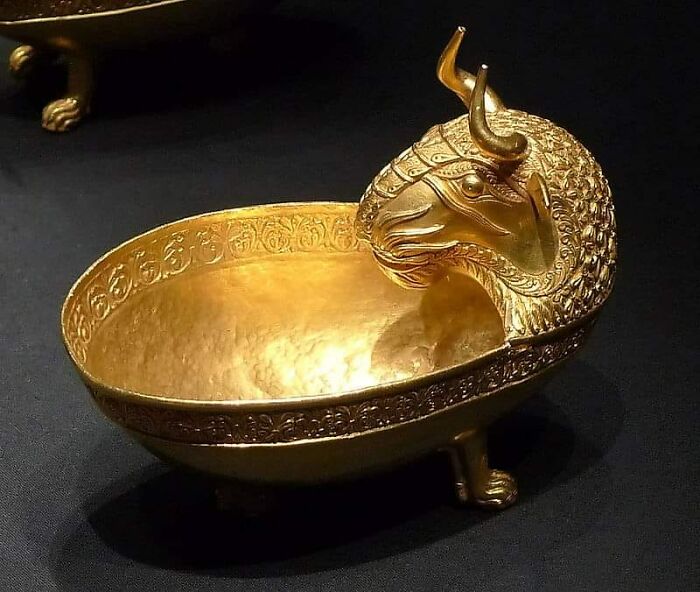
Image credits: Antique Archeology
#40 Stunning Gold Medallion With The Portrait Of Alexander The Great
This Medallion was discovered in Egypt as part of a hoard that comprised about twenty similar medallions (now dispersed among various museums), eighteen gold ingots, and six hundred gold coins issued by Roman emperors from Severus Alexander to Constantius I. One of the medallions, now in the Calouste Gulbenkian Museum in Lisbon, bears an inscription that possibly reads "Olympic games of the year 274", a date corresponding to 242-243 CE. It is possible that the medallions were intended as prizes to be given out at that event. Alternatively, they may have been issued by Emperor Caracalla who is potrayed on some of them. Caracalla liked to be compared to the great king and conquerror Alexander of Macedon. Like Alexander, this Roman emperor waged war in the East, and actually died in the course of his campaign against the Parthians. This particular medallion shows Alexander the Great gazing heavenward and bearing a shield decorated with signs of the zodiac. This portrait shows him with his hair pulled back. He wears a decorated cuirass with a figure of Athena on the shoulder strap and, on the chest, a scene from the Gigantomachy (War of the Giants). The back depicts Alexander and Nike, goddess of victory, riding in a chariot, flanked by the deities Roma and Mars. Image property: The Walter Art Museum, Baltimore Maryland.
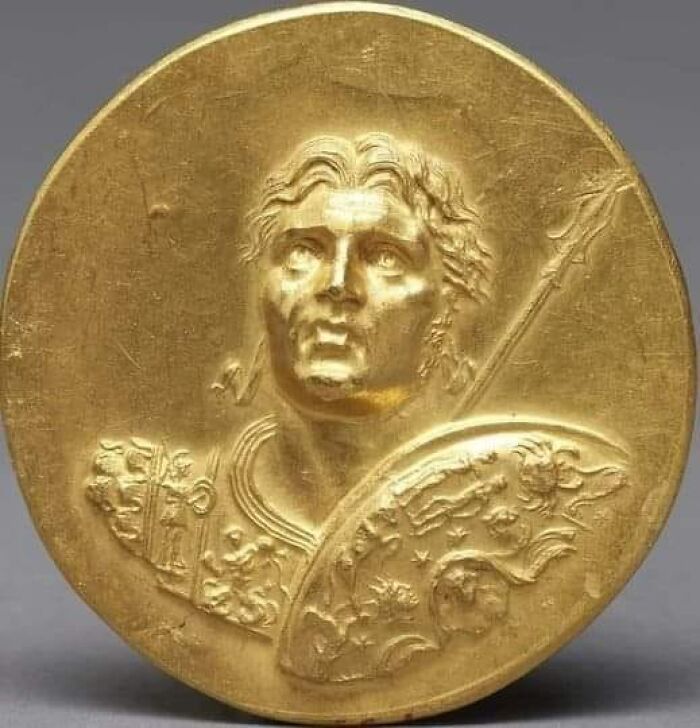
Image credits: Antique Archeology
#41
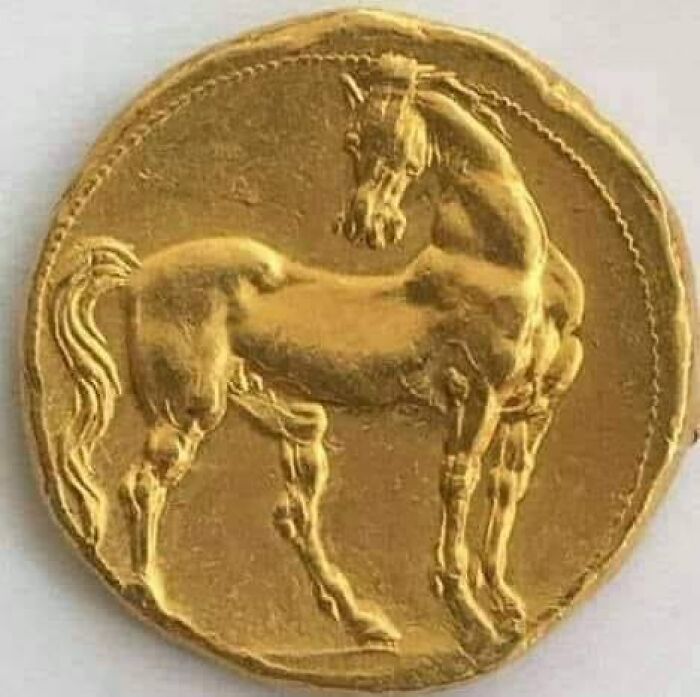
Image credits: Antique Archeology
#42 A Mosaic Floor Of A Villa Dating Back To The 4th Or 5th Century Ad Was Found In Montorio, Verona, Italy
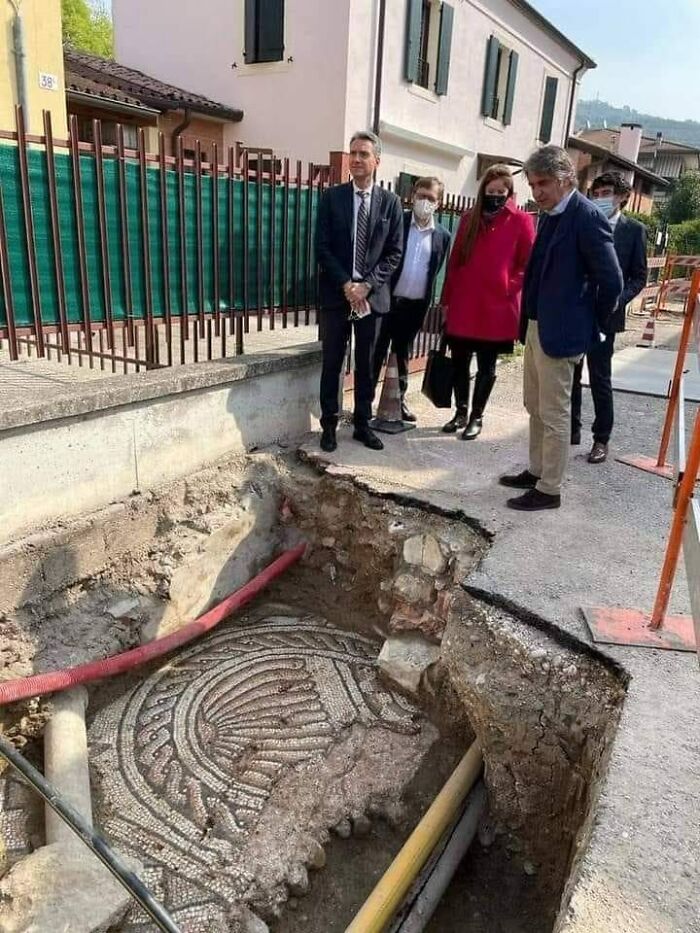
Image credits: Antique Archeology
#43 Roman Emperor Philippus The Arab Kneeling In Front Of Persian King Shapur I, Begging For Peace
The standing emperor represents Valerian who was taken captive by the Persian army in 260 AD, The triumph of Shapur I, Naqshe Rostam, Iran.
- You Might Also Like: 21 New Humorous Comics By Leigh Rubin To Make You Smile
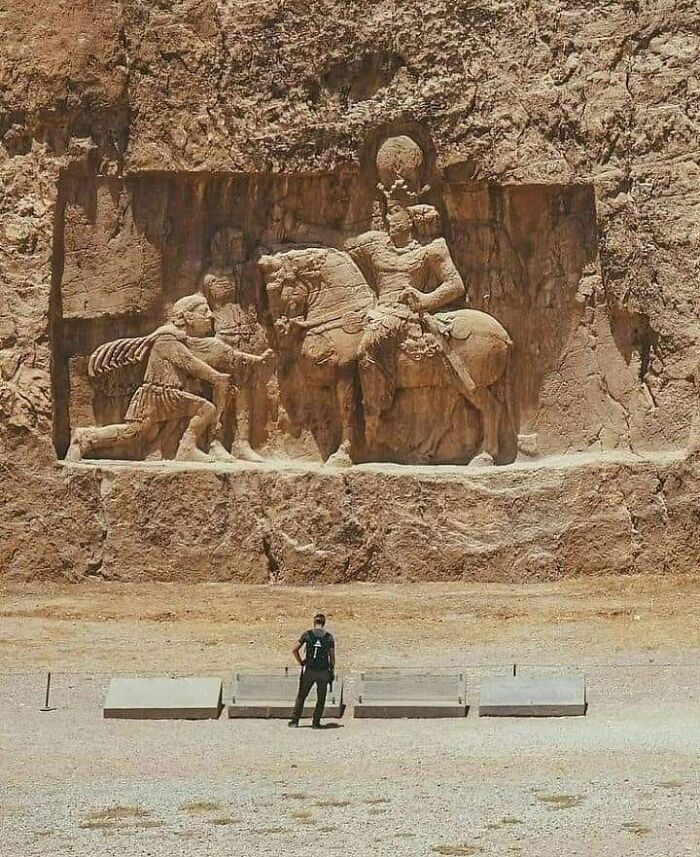
Image credits: Antique Archeology







